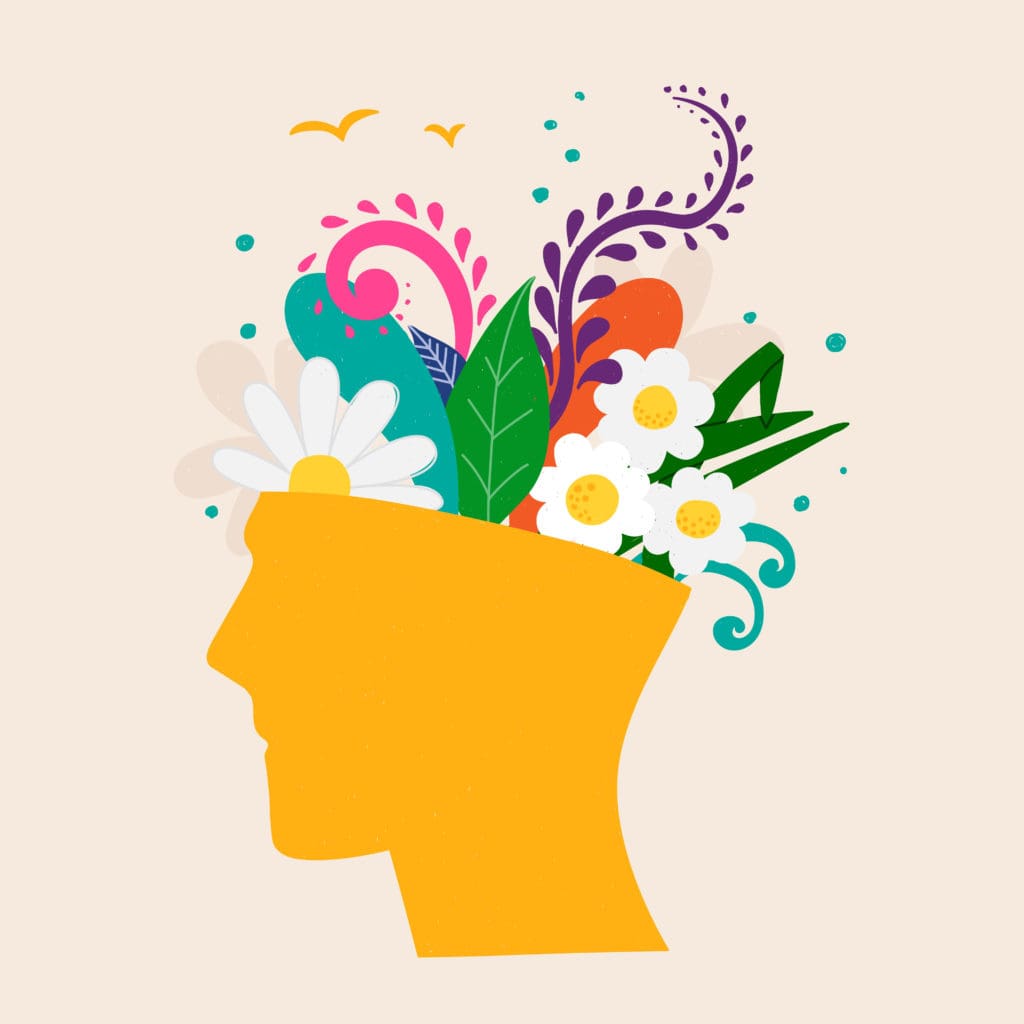Medical Editor: Dr. David Cox, PhD, ABPP and Hilary Morris, MA, LPC
Ketamine Assisted Psychotherapy
Ketamine is a dissociative anesthetic that was approved by the Food and Drug Administration in 2019 for treatment-resistant depression. Since then, it has also been combined with psychotherapy to assist in symptom resolution for depressive, anxious, and emotional trauma states.
Ketamine Assisted Psychotherapy (KAP) is a technique that combines ketamine administration with a concurrent psychotherapeutic process. Ketamine dosage and method of administration vary depending on the client, psychological profile, and goals for treatment. Ketamine therapy has many treatment models and can be administered via intravenous (IV) injection, intramuscular (IM) injection, intranasal (IN) spray, or oral lozenge administration. Dosing bioavailabilities include IM/IV: ninety-three to ninety-five percent; IN: twenty-five to thirty-five percent; oral: ten percent or less. Administration can be conducted by a psychiatrist, psychiatric nurse practitioner, or by a psychotherapist working with a prescribing professional.
Research shows ketamine can enhance the process of psychotherapy. The KAP experience provides an interruption from typical thoughts, emotions, and body sensations associated with symptoms of depression, anxiety, and other emotional distress. This is particularly useful when thoughts become rigid and ruminative to the point of dysfunction, causing distress, harm, or emotional overwhelm. Using ketamine with psychotherapy aids trauma processing by creating synaptic plasticity, facilitating fear extinction, blocking memory reconciliation, and improving the ability to process traumatic memories. It provides a glimpse of what an individual may look like removed from their distressing thought narratives or behavior patterns. Ketamine treatments, combined with psychotherapy, renew possibility and hope.
Psychedelic therapies, like KAP, can increase awareness of behavioral patterns, ways of relating, and schemas that reinforce emotional distress. These therapies can augment traditional psychotherapy, allowing the client to access higher levels of fluidity, flexibility, and malleability in thought and behavioral patterns. In addition, psychedelic therapy enhances neural plasticity and can improve the therapeutic alliance by promoting feelings of openness and enhancing empathy toward self and others.
KAP with Psychotherapist
When a licensed psychotherapist provides KAP, patients are required to undergo medical clearance through an intake evaluation with a physician, psychiatrist, or psychiatric nurse practitioner. Once the prescriber establishes medical necessity, an initial ketamine session is conducted to ensure that the client is able to tolerate the medicine appropriately. Contraindications for KAP include certain medications, high blood and intraocular pressure, and certain heart conditions. Then ketamine lozenges, called troches, are prescribed for the client to bring to the therapist’s office for treatment. Other models of ketamine-assisted psychotherapy include co-therapy, with the therapist and prescriber both present with the client for the treatment session.
Treatments with a psychotherapist tend to involve lower doses so that the client is able to connect with inner experiences while also being able to maintain a dialogue with the therapist. Ketamine treatments create decreased activity within the default mode network and a reduced level of physiological activation when accessing distressing memories or emotions. Combining psychotherapeutic techniques with ketamine accelerates the typical psychotherapy process. Interhemispheric communication often invites new insights.
KAP Lozense Session
Most KAP sessions last up to 3 hours and may fluctuate based on practitioner protocols and client preferences. A typical KAP session begins with thirty minutes of intention setting to discuss desired outcomes. Some clients create a ceremonial practice and bring a meaningful object (such as a stone, candle, or picture of a loved one) to have present during the session. This may provide comfort when entering the medicine experience. Next, the patient ingests the lozenge orally. Rapid release lozenges dissolve instantly, and more traditional lozenges dissolve after about five minutes. Patients then swish the dissolved lozenge with the saliva in the mouth where the medicine is absorbed through the mucus membranes. The swishing process lasts from five to twelve minutes as directed by the prescriber. The longer the oral solution is in the mouth, the higher quantity of medicine is absorbed. Depending on the goals for the session, the prescriber will direct the time of the oral solution.
Patients typically swallow the medicine and lie down on a couch; adding an eye mask and noise-canceling headphones with ambient music can help direct the experience inward. This allows the patient to tend to whatever thoughts, feelings, or sensations that may show up. The client typically “peaks” at about one hour, marking the strongest point of the experience, while the second hour may include either more inward work or outward processing with the therapist, depending on the patient’s needs. During the last thirty minutes, the therapist will assist the client in preparing for the conclusion of the session, offering grounding strategies like stretching, breathwork, or continued therapeutic processing.
Non-directive Approach
KAP differs from traditional clinical interventions, as it uses a nondirective approach similar to the modality in MDMA protocols for treating PTSD. This modality views the client as the expert on themselves. The experience unfolds naturally as the client follows body sensations, emotions, and memories as they arise. It is a client-directed approach with the therapist following the client’s lead. The client is encouraged to connect with sources of inner healing intelligence versus seeking external cues for directing their experience (for example asking the therapist or guide). They acknowledge inward sources of validation and motivation, strengthen internal locus of control, and become the director of their healing journey. They view themselves as the authority or “expert” of themselves and their healing process, versus externalizing their healing. They are encouraged to let go of the need to control and to turn off normal cognitive processes to direct awareness more into the body.
Catalyst Therapy
KAP and other psychedelic therapies have been described as catalysts and accelerants to traditional psychotherapy processes. The psychedelic experience helps overcome barriers and resistance to typical psychotherapy limitations. Psychotherapy and the path to healing involve connecting with difficult emotions such as sadness, pain, grief, loss, devastation, and fear. Although it may be difficult, accessing, honoring, and expressing these emotions can be an antidote to suffering. Resistance to or premature discontinuation of psychotherapy often occurs as clients struggle to face difficult emotions.
KAP therapies help individuals connect with these emotions due to the pharmacological impact on the brain and memory reconsolidation. The experience facilitates processing traumatic memories with reduced physiological activation due to the reduced blood flow and connectivity in the default mode network and limbic system. Psychedelics also facilitate rapid interhemispheric communication and can aid in advanced processing, which creates an accelerant impact. This helps explain why psychedelic therapy accelerates the psychotherapeutic process.
Integration
Ketamine promotes neural plasticity and further assists in shifting cognitive narratives, schemas, and behavior patterns. In the days following a KAP session, the client typically returns for an integration session with the therapist. This provides an opportunity to process through and integrate any insights gained during the ketamine session in order to create lasting changes in alignment with healing goals. Clients connect with inward sources of growth, validation, self-esteem, and power. KAP combined with integration approaches improves emotional regulation abilities, and clients develop trust in themselves to face their world with renewed boldness, strength, and interpersonal satisfaction.
Psychable’s online directory can help provide access to ketamine-assisted psychotherapy, trained psychotherapists, psychiatrists, and prescribers. Click here to join and begin the journey!









